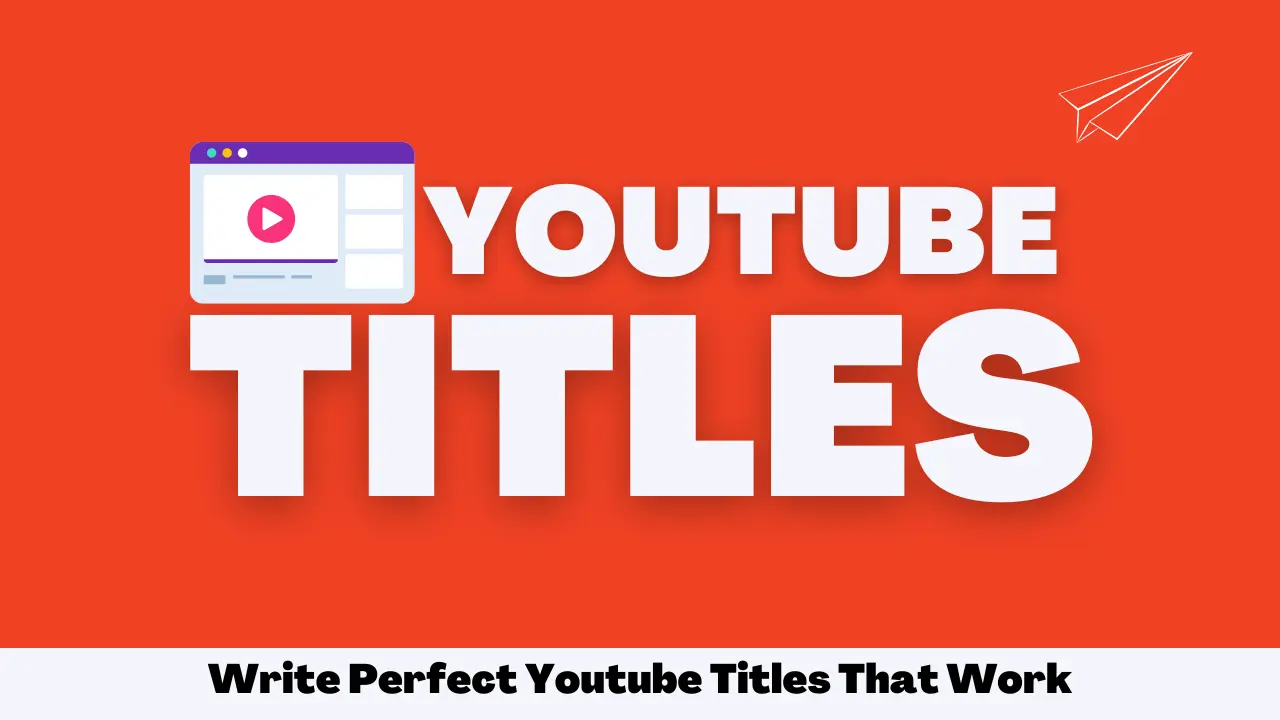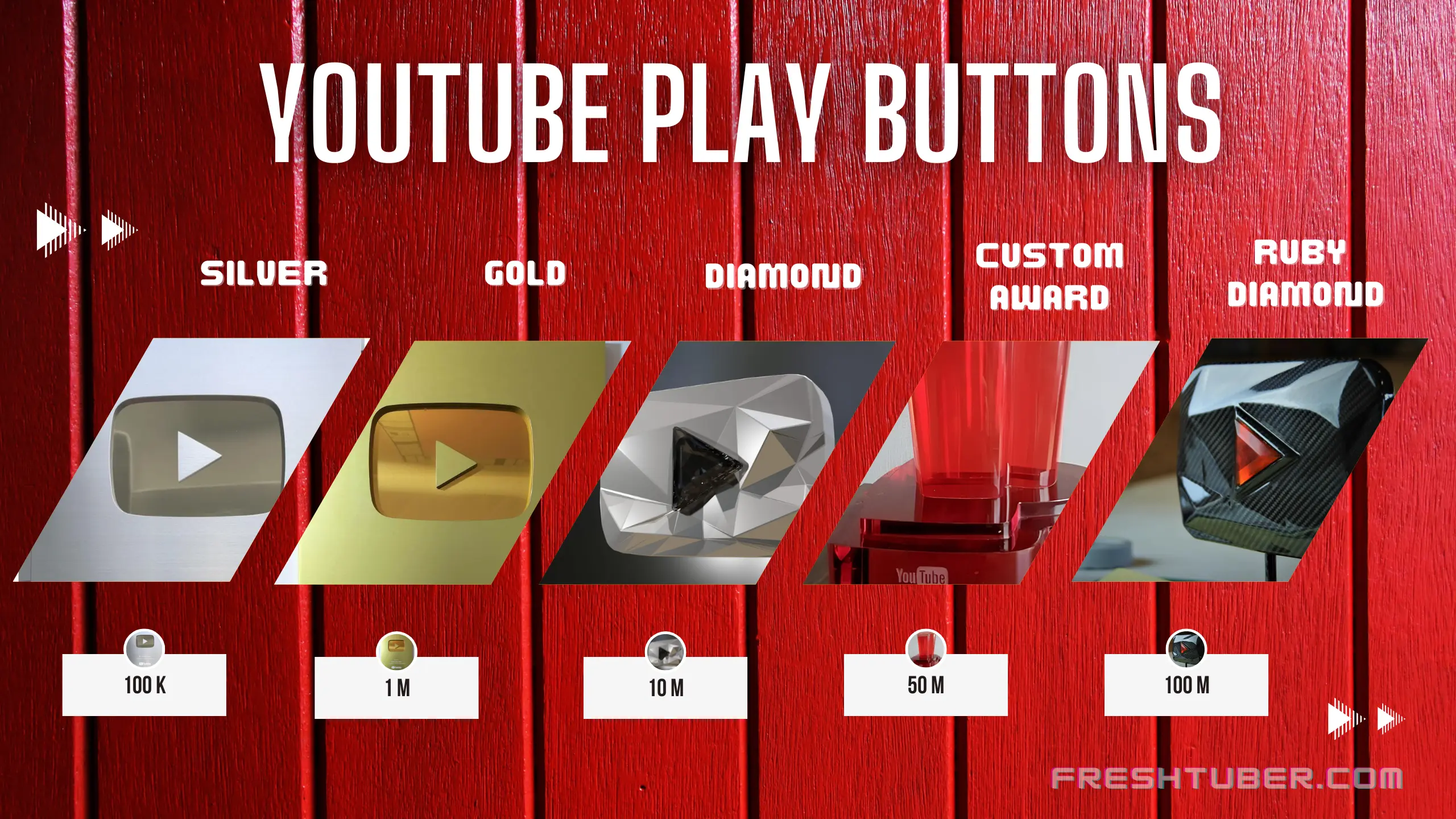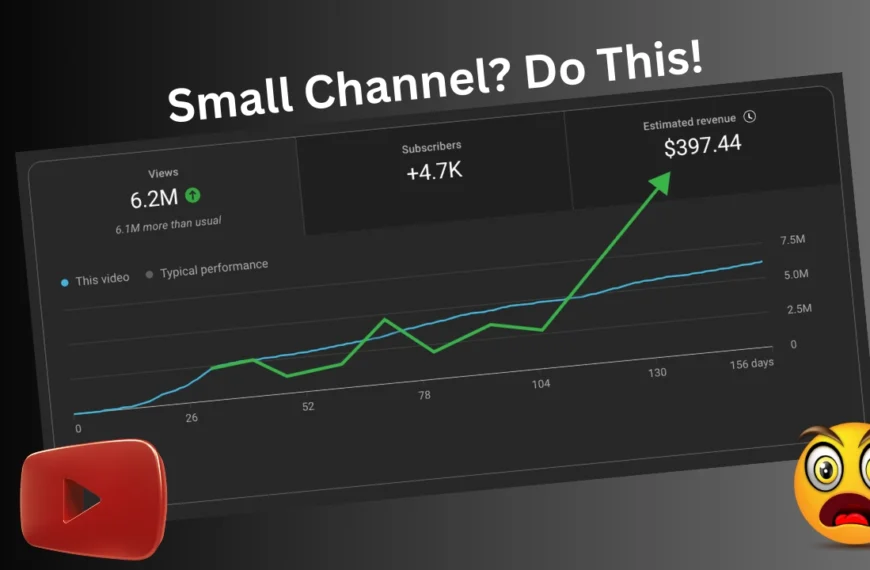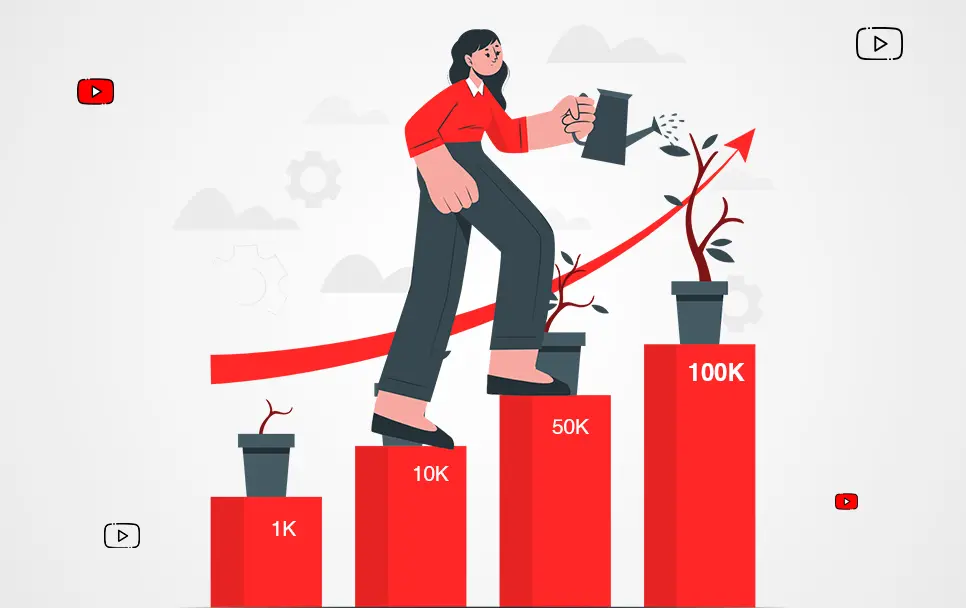In the crowded world of YouTube, standing out and getting views can be a challenge. However, with the right strategies and tools, you can optimize your videos to increase visibility and attract more viewers.
This blog post will guide you through the essential steps to optimize your YouTube videos and help you stand out among the millions of videos uploaded daily.
The Importance of Keyword Research
In the ever-expanding world of digital content, it is crucial for content creators and marketers to understand the importance of keyword research.
Whether you are a YouTuber trying to grow your channel or a business owner looking to optimize your online presence, keyword research is a fundamental step that should not be overlooked.
Optimizing your videos on YouTube requires more than just catchy titles and eye-catching thumbnails. It requires a deep understanding of what your target audience is searching for and how you can align your content with those search queries. This is where keyword research comes into play.
Insight into Popular Search Queries
One of the most valuable resources for keyword research on YouTube is its autocomplete feature. When you start typing a search term into the YouTube search bar, you will notice that it suggests several popular search queries related to your input. These suggestions are based on the most commonly searched terms on YouTube.

By paying attention to these autocomplete suggestions, you can gain valuable insights into what people are actively searching for on the platform. This information can help you shape your video titles, descriptions, and tags to align with popular search queries and increase the discoverability of your content.
Identifying Popular Topics and Seasonal Trends
Google Trends is another powerful tool that can help you in your keyword research journey. It provides data on the popularity of search terms over time, giving you a clear picture of trending topics and seasonal trends.

By analyzing the data provided by Google Trends, you can identify topics that are currently popular or trending in your niche. This can help you create timely and relevant content that resonates with your audience and increases the chances of your videos being discovered.
Understanding Search Volume and Relevant Keywords
Google Keyword Planner is a free tool provided by Google that allows you to analyze search volume and find relevant keywords for your videos. It provides data on the average monthly search volume, competition, and suggested bid for keywords.
By using Google Keyword Planner, you can get an idea of how often certain keywords are searched for and how competitive they are. This information can guide you in choosing the most appropriate keywords for your video titles, descriptions, and tags.
Utilizing SEO Tools for YouTube
While Google’s built-in tools are valuable, there are also third-party SEO tools specifically designed for YouTube. Two popular options are TubeBuddy and VidIQ.
TubeBuddy is a comprehensive YouTube channel management and optimization toolkit. It provides features such as keyword research, tag suggestions, competitor analysis, and thumbnail generation. With TubeBuddy, you can streamline your keyword research process and maximize the potential of your videos.
VidIQ is another powerful SEO tool that offers a range of features to help you optimize your videos for search. It provides insights into search volume, competition, suggested tags, and even tracks the performance of your competitors. VidIQ can be a valuable asset in your keyword research journey.
In summary, keyword research is an essential step in optimizing your videos on YouTube. By understanding popular search queries, identifying trending topics, and using relevant keywords, you can increase the discoverability of your content and attract a larger audience.
Utilizing tools such as Google Trends, Google Keyword Planner, TubeBuddy, and VidIQ can significantly simplify and enhance your keyword research process. These tools provide valuable data and insights that can guide you in creating targeted and optimized content.
Remember, keyword research is an ongoing process. It is important to regularly analyze and update your keyword strategy to adapt to changing trends and ensure the continued success of your YouTube channel or online presence.
YouTube’s Best Practices for Video Creators
When it comes to creating and sharing videos on YouTube, there are certain best practices that video creators should follow to maximize their success. These best practices cover everything from optimizing the video file name and description to creating engaging content and promoting videos on other platforms. In this blog post, we will explore YouTube’s most essential practices for video creators, so you can take your videos to the next level.
Optimize Video File Name, Title, Description, and Tags with Relevant Keywords
One of the core practices to keep in mind when uploading videos to YouTube is to optimize the video file name, title, description, and tags with relevant keywords. This optimization helps ensure that your video is discoverable by search engines and recommended to the right audience.
Start by choosing a descriptive file name for your video before uploading it to YouTube. Use keywords that accurately represent the content of your video to make it easier for search engines to understand and categorize it. For example, if you have a cooking video, a file name like “delicious-recipes-for-beginners.mp4” would be more beneficial than a generic file name like “video001.mp4”.
Next, focus on optimizing the title of your video. A well-crafted title should be attention-grabbing and include relevant keywords. For instance, a title like “Easy Pasta Recipe: Homemade Italian Delights” not only describes what the video is about but also includes keywords like “easy pasta recipe” and “homemade Italian” to improve its visibility.
The video’s description is another key area where you can optimize for search and discovery. Write a detailed description that accurately reflects the content of your video, including relevant keywords and phrases. Be sure to include additional information such as a brief summary, links to related resources, and timestamps for different sections of the video to enhance user experience.
Tags play a significant role in helping YouTube understand and categorize your video. Choose tags that are relevant to your content and include both broad and specific keywords. For example, if you have a makeup tutorial, you can include tags like “makeup tutorial”, “beauty tips”, and “smokey eye”. This will help YouTube recommend your video to users who are interested in these topics.
Create a Strong Thumbnail to Attract Viewers
A visually appealing and engaging thumbnail can make a significant difference in attracting viewers to click on your video. YouTube allows you to upload a custom thumbnail for each video, so make sure to take advantage of this feature.
When designing a thumbnail, pay attention to the composition, colors, and overall visual appeal. The thumbnail should accurately represent the content of the video while being visually enticing. Use bold and clear text to highlight the main topic or title of the video and choose images that evoke curiosity or capture attention. Avoid using misleading thumbnails that don’t accurately reflect the video’s content, as this may lead to negative user feedback and a loss of trust.
Additionally, make sure that the thumbnail adheres to YouTube’s guidelines and is formatted correctly. Thumbnails should have a resolution of 1280×720 pixels (with a minimum width of 640 pixels), be in either JPEG, GIF, BMP, or PNG format, and have a file size smaller than 2 MB.
Extend Viewer Watch Time by Creating Engaging Content
One of YouTube’s primary metrics for ranking and recommending videos is watch time – the total amount of time users spend watching your video. To increase watch time, it is crucial to create content that is engaging, valuable and keeps viewers hooked from the beginning until the end.
Start by capturing viewers’ attention within the first few seconds of your video. Use an intriguing introduction, exciting visuals, or an attention-grabbing statement to hook your audience right from the start. Once you have their attention, focus on delivering high-quality content that provides value and keeps viewers engaged.
Break your video into segments or chapters to make it easier for viewers to navigate and digest the content. This not only helps in creating a more organized and structured video but also enhances the user experience. Use transitions, graphics, and animations to make your video visually appealing and reinforce key points effectively.
Another way to encourage longer watch times is by creating interactive content. Incorporate elements like quizzes, polls, or challenges in your videos to encourage viewers to participate actively. This not only increases engagement but also keeps viewers interested and invested in your content.
Here are a few techniques to improve viewer watch time:
- Create an introduction that hooks viewers from the beginning
- Structure your video with clear sections or chapters
- Add visual cues and animations to keep viewers engaged
- Include relevant and informative content throughout
- End with a strong call-to-action (CTA) to encourage viewers to take the desired action
Cross-promote videos on Other Platforms and Add CTAs
While YouTube is undoubtedly the largest video-sharing platform, that doesn’t mean you should limit your video promotion efforts to YouTube alone. Cross-promoting your videos on other platforms can significantly increase your reach and attract more viewers to your YouTube channel.
Share your videos on social media platforms like Facebook, Twitter, and Instagram, making sure to tailor the content to the specific platform’s audience. Each platform has its own unique features and best practices, so take the time to optimize your video posts accordingly. For instance, on Instagram, you can create short teaser videos or share captivating behind-the-scenes footage.
In addition to cross-promoting, it is essential to include clear calls-to-action (CTAs) in your videos. CTAs prompt viewers to take a specific action, such as subscribing to your channel, liking the video, or leaving comments. Adding CTAs encourages viewer engagement, helps build a loyal audience, and maximizes the impact of your videos.
Following YouTube’s best practices for video creators can significantly improve your chances of success on the platform. By optimizing your videos with relevant keywords, creating compelling thumbnails, producing engaging content, cross-promoting on other platforms, and incorporating CTAs, you can attract more viewers, increase watch time, and ultimately grow your YouTube channel.
Utilizing YouTube’s Analytics and SEO Tools
As a content creator on YouTube, it’s essential to understand how your videos are performing and how you can optimize them to reach a wider audience. Thankfully, YouTube provides a range of analytics and SEO tools that can help you achieve just that. In this blog post, we’ll explore the various ways you can make use of these tools to improve your YouTube channel’s performance.
YouTube’s Channel Analytics page provides valuable insights
One of the first places you should visit when looking to analyze your YouTube channel’s performance is the Channel Analytics page. This page offers a wealth of information about your viewers, including their demographics, viewing habits, and interaction with your videos.
With this data, you can gain insights into who your target audience is and tailor your content to their preferences. For example, if you see that a particular age group is engaging most with your videos, you can create more content that caters to their interests.
Additionally, the Channel Analytics page provides data on your video’s performance over time, including metrics such as views, watch time, and engagement. By analyzing this data, you can identify trends and patterns and determine which videos are resonating the most with your audience.
Analyzing competitor websites with Ahrefs Keyword Explorer
Understanding what your competitors are doing can provide valuable insights and inspiration for your own YouTube channel. Ahrefs Keyword Explorer is a powerful tool that allows you to analyze competitor websites and discover keywords that they are ranking for.
Simply enter the URL of a competitor’s YouTube channel or website into Ahrefs Keyword Explorer, and it will generate a list of relevant keywords that they are targeting. You can then use this information to create content around similar topics and increase your chances of ranking higher in YouTube search results.
TubeBuddy and VidIQ offer keyword research and tag management capabilities
In addition to Ahrefs Keyword Explorer, other tools such as TubeBuddy and VidIQ offer keyword research and tag management capabilities specifically tailored for YouTube. These tools allow you to analyze the competitiveness of keywords, find related keywords, and optimize your video tags to improve search visibility.
TubeBuddy and VidIQ also provide additional features such as competitor analysis, bulk video editing, and thumbnail optimization. These features can help you gain a competitive edge and make the most out of your YouTube channel’s SEO opportunities.
Google Trends helps identify popular topics and seasonal trends
Google Trends is another valuable tool that can help you identify popular topics and seasonal trends. By entering relevant keywords or topics into Google Trends, you can see the search interest over time and discover any spikes or seasonal patterns.
Using this information, you can align your video content with current trends and capitalize on what’s popular among viewers. For example, if you’re a cooking channel and you see a sudden increase in searches for “holiday recipes”, you can create videos showcasing festive recipes to attract more viewers during that seasonal period.
Google Keyword Planner provides data on search volume and relevant keywords
Google Keyword Planner is primarily designed for Google Ads users, but it can also be a useful tool for YouTube keyword research. This tool provides data on search volume, competition, and relevant keywords for a given query.
By using Google Keyword Planner, you can discover high-volume keywords that are relevant to your content and integrate them into your video titles, descriptions, and tags. This can help you increase your visibility in YouTube search results and attract more targeted viewers to your channel.
Utilizing YouTube’s analytics and SEO tools is crucial for understanding your audience, improving your content, and increasing your channel’s visibility. By regularly analyzing your Channel Analytics, studying competitor websites, and leveraging tools like TubeBuddy, VidIQ, Google Trends, and Google Keyword Planner, you can optimize your videos and reach a wider audience on YouTube.
Conclusion
Maximizing the reach of your YouTube videos requires a multi-faceted approach. Firstly, optimize your video file name, title, description, and tags with relevant keywords to improve visibility in YouTube’s search results. Secondly, create a visually appealing thumbnail that attracts viewers and entices them to click on your video. Thirdly, focus on creating engaging content that keeps viewers hooked and watching until the end to boost your video’s watch time. Fourthly, cross-promote your videos on other platforms and add CTAs within your videos to expand your reach and increase engagement. Lastly, leverage a CRM platform like HubSpot to stay organized, track video performance, and share data across applications.
Incorporating these strategies will help you maximize the reach of your YouTube videos, attract a larger audience, and achieve your video marketing goals.





